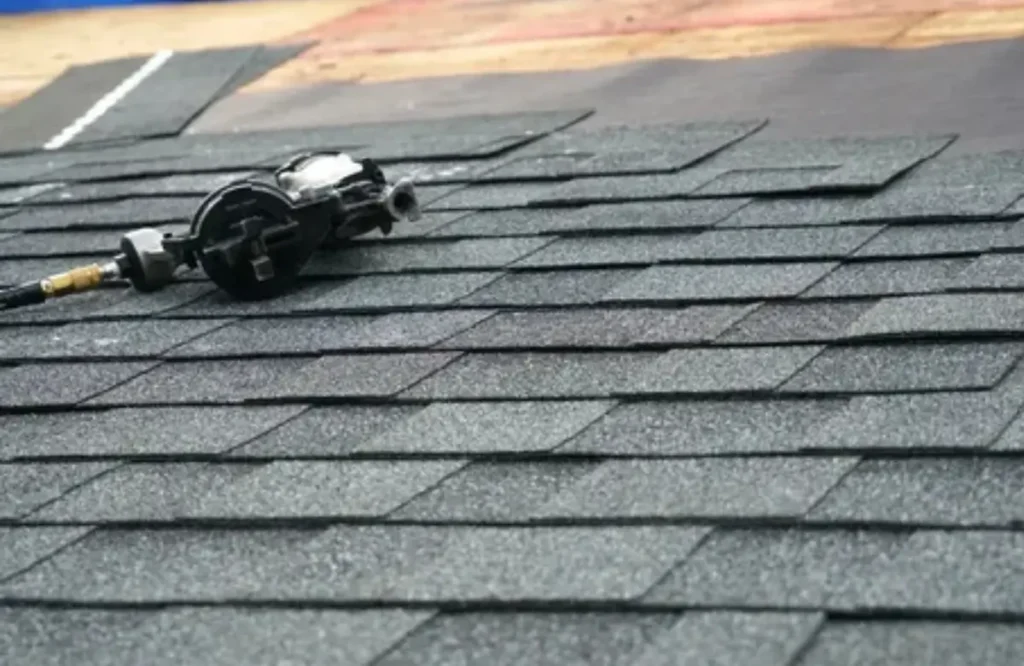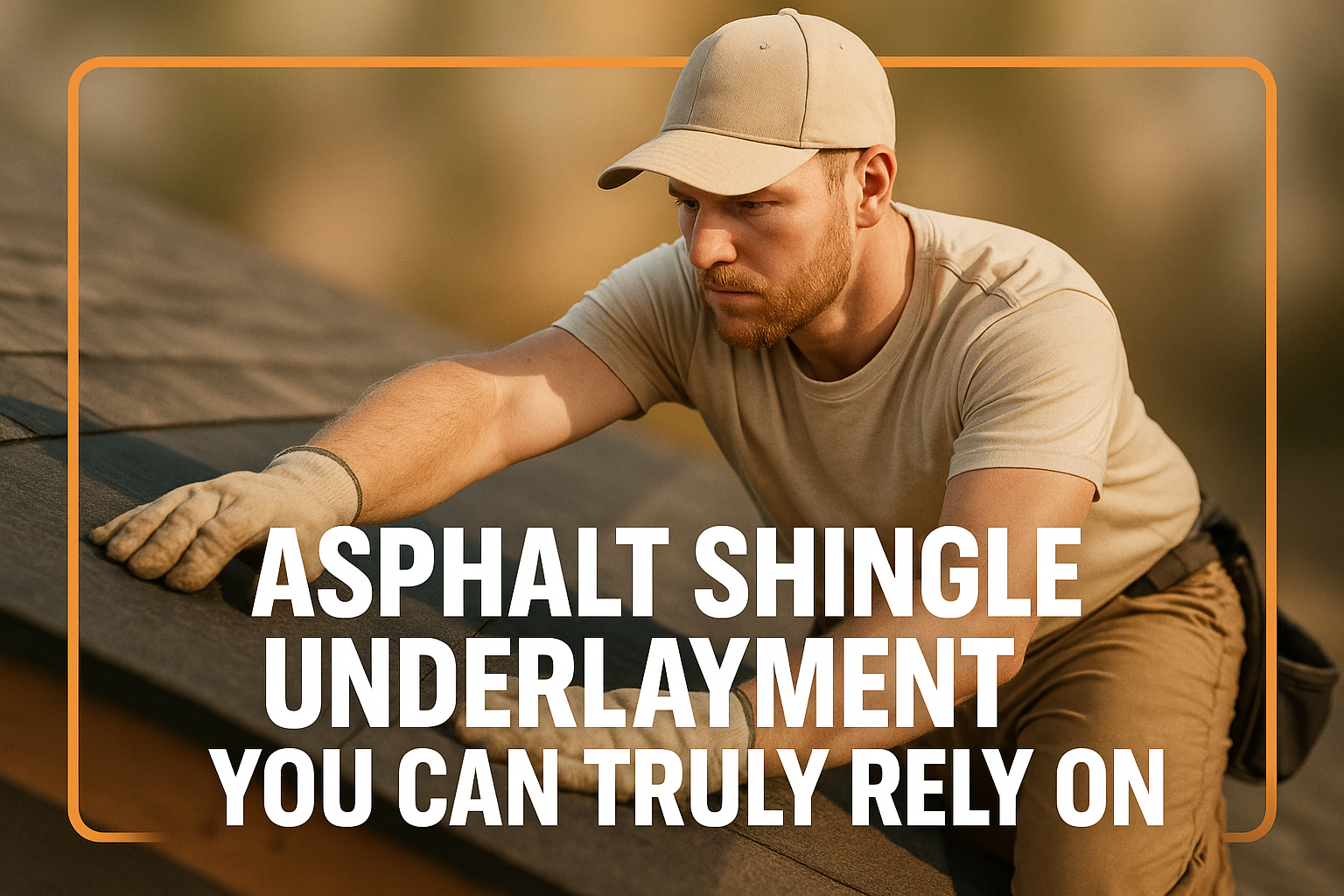Most homeowners consider their roof, and what they envisage is the roof shingles and not more than that. But it is the underlayment that makes your roof a long-lasting, weather-resistant, and durable one. Imagine it like a shield to strike the first blow before your shingles.
Even quality shingles might not perform well without quality underlayment. Rain, wind, snow, and ice may enter cracks and result in leaks and rotting of wood. This is why those who do the work always say: It is the strength of your roof which begins under the shingles.
Why Asphalt Shingle Underlayment Matters
When most homeowners think about their roof, they picture shingles not what’s underneath. But the underlayment is what makes your roof durable, weather-resistant, and long-lasting. Think of it as the shield that takes the first hit before your shingles do.
Without quality underlayment, even the best shingles can fail early. Rain, wind, snow, and ice can find their way into cracks, causing leaks and wood rot. That’s why professionals always say: the strength of your roof starts beneath the shingles.
What Is Asphalt Shingle Underlayment?
The protection layer, which is placed on top of your roof deck, and under the asphalt shingles, is referred to as underlayment. It serves as a secondary protection against water, heat and wind.
Today, there are three types of roof underlayment which are mostly used:
- Felt (Asphalt-Saturated Paper):
The traditional choice, felt underlayment, is affordable and reliable but not the most durable. It’s made of paper or fiberglass mat soaked in asphalt to make it water-resistant. - Synthetic Underlayment:
Modern and lightweight, this is often considered the best roofing underlayment for asphalt shingles. It’s stronger, tear-resistant, and easier to install compared to felt. - Rubberized Asphalt Underlayment:
High-end product with sticky tape. It offers superior waterproofing especially in the high-risk regions such as valleys, eaves and roof lines.
All the types have their own advantages, yet synthetic and rubberized underlayments are rapidly becoming the most popular ones among those who intend to be sure of reliability and long-term protection.
The Best Roof Underlayment for Asphalt Shingles
You must not only consider price when trying to find the best underlayment to be used with asphalt shingles. It is performance, durability and protection. We can do a better inspection of what an underlayment actually is reliable.
1. Weather Resistance
Your roof brings sunshine, rain, snow, and wind all year round. The underlayment must be of high quality and should not permit water to penetrate it and should not be subject to temperature changes, cracking and curling. Synthetic underlayments are seen in this place, as they do not absorb water and are dry within a short time of rainfall.
2. Durability and Strength
Felt paper is easy to tear during installation or whenever there is much foot traffic. Synthetic and rubberized underlayments on the other hand are a lot tougher. They are built to withstand the burden of installation and harsh climates.
3. Breathability
An effective underlayment is protective and ventilating. It must permit the moisture within the house to escape yet external moisture should be excluded. This is a balance that does not allow mold, mildew and rot.
4. Ease of Installation
Synthetic underlayment is also favored by professional roofers since it is lightweight and easy to roll out, as well as safer to walk on. Most of them are fitted with non-slip surfaces minimizing the chances of accidents based on steep roofs.
5. Lifespan and Warranty
Your shingles last a long time and so does the best roofing underlayment. The leading brands come with 20-50-year warranties, meaning that you will not need to worry about the premature failure of underlayments in the middle of the roof.
Comparing the Top Choices
| Type | Durability | Water Resistance | Cost | Best For |
| Felt (15/30 lb) | Fair | Moderate | Low | Budget projects |
| Synthetic | Excellent | High | Medium | Most homes |
| Rubberized Asphalt | Superior | Excellent | High | Extreme climates / premium roofs |
From the table above, it’s easy to see why most homeowners today choose synthetic underlayment. It combines durability, affordability, and performance the perfect blend for asphalt shingle roofs.
Real-Life Example
Imagine two homeowners one uses old-style felt paper, and the other installs a modern synthetic underlayment. After a few years, both face a heavy storm. The roof with felt underlayment starts leaking around the edges, while the synthetic one stays intact.
That’s the power of choosing the best roof underlayment for asphalt shingles — peace of mind and long-term savings.

Benefits of Using the Best Underlayment for Asphalt Shingles
1. Enhanced Protection
- Prevents leaks and moisture buildup.
- Shields your roof deck from wind-driven rain.
- Adds an extra layer of defense against UV rays and heat.
2. Extended Roof Lifespan
- Reduces early wear and tear.
- Minimizes the risk of water damage, mold, or rot.
- Keeps shingles stable even during extreme weather changes.
3. Cost Savings Over Time
- Less maintenance and fewer repairs.
- Increases the value and durability of your entire roofing system.
- Many underlayments are energy-efficient, helping regulate attic temperature.
Pro Tips for Choosing the Right Roof Underlayment
1. Match the Underlayment to Your Climate
- Humid or rainy areas: Go for rubberized asphalt underlayment.
- Hot or dry climates: Choose UV-resistant synthetic materials.
- Snow-prone regions: Ensure it has ice and water shield properties.
2. Don’t Compromise on Quality
Inexpensive felt can save you now; however, it will have you making repairs prematurely. An investment that is worthwhile in the long run in terms of protection is a durable synthetic or rubberized underlayment.
3. Hire Experienced Roofers
Even the finest underlying to the shingles will not work well when it is poorly installed. Make sure to hire the experienced contractors who can seal the edges, valleys, and vents appropriately.
4. Check Compatibility
Ensure that the underlayment you have selected is appropriate to the type of shingles, slant of the roof and the material of the underlying deck. Better adhesion and performance will be guaranteed by compatibility.
Conclusion
The roof of your whole home is covered by it, and it is your underlayment that makes the inside of your home as strong as the outside. Selecting the finest roof underlayment for the asphalt shingles ensures that it is long-lasting to the assaults of leaks, weather, and time itself.
You are not getting a roof you are buying a guarantee of peace of mind when you invest in good materials and an expert installer.
To explore more expert roofing tips, visit Down To Earth Roofing.
FAQs
Which is the best roofing underlayment for asphalt shingles?
Synthetic underlayment has been largely regarded as the most appropriate since it is resilient, waterproof and it is simple to install.
Can I omit underlayment when I am installing asphalt shingles?
No, underlayment is necessary. It provides an additional protection against leaks, winds and heat damage.
What is the lifetime of the roof underlayment?
Quality underlayments have a life span of 20-50 years with regard to the quality of material and installation.
What is the difference between felt and synthetic underlayment?
Felt is conventional yet lighter and heavier. It is light and more waterproof and the synthetic underlayment is stronger.
Is rubber asphalt underlay a worthwhile expense?
Yes, particularly in areas that have heavy rains or snow. It provides high-quality waterproofing and self-sealing.


